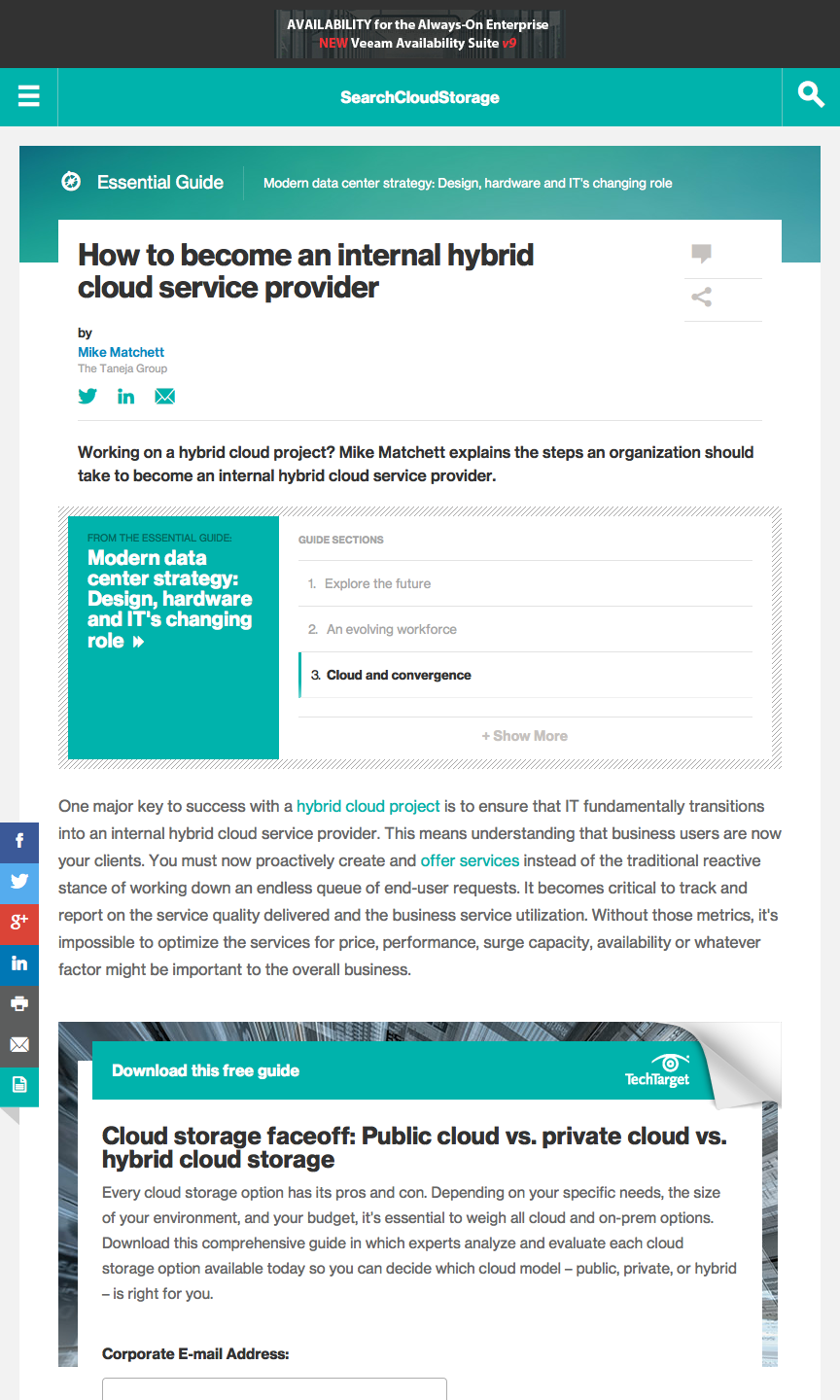How to become an internal hybrid cloud service provider

An IT industry analyst article published by SearchCloudStorage.
Working on a hybrid cloud project? Mike Matchett explains the steps an organization should take to become an internal hybrid cloud service provider.
 One major key to success with a hybrid cloud project is to ensure that IT fundamentally transitions into an internal hybrid cloud service provider. This means understanding that business users are now your clients. You must now proactively create and offer services instead of the traditional reactive stance of working down an endless queue of end-user requests. It becomes critical to track and report on the service quality delivered and the business service utilization. Without those metrics, it’s impossible to optimize the services for price, performance, surge capacity, availability or whatever factor might be important to the overall business.
One major key to success with a hybrid cloud project is to ensure that IT fundamentally transitions into an internal hybrid cloud service provider. This means understanding that business users are now your clients. You must now proactively create and offer services instead of the traditional reactive stance of working down an endless queue of end-user requests. It becomes critical to track and report on the service quality delivered and the business service utilization. Without those metrics, it’s impossible to optimize the services for price, performance, surge capacity, availability or whatever factor might be important to the overall business.
Every cloud storage option has its pros and cons. Depending on your specific needs, the size of your environment, and your budget, it’s essential to weigh all cloud and on-prem options. Download this comprehensive guide in which experts analyze and evaluate each cloud storage option available today so you can decide which cloud model – public, private, or hybrid – is right for you.
Hallmarks of a successful hybrid organization include:
- A renewed focus on implementing higher levels of automation, spurred by the need to provide clients ways to provision and scale services in an agile manner. This automation usually extends to other parts of IT, like helping to build non-disruptive maintenance processes.
- An effective process monitoring and management scheme that works as cloud scales to help ensure service-level agreements.
- Clients aware of what they are consuming and using, even if they’re not actually seeing a bill for the services.
Perhaps the first step is to evaluate the involved workloads and their data sets to look for good hybrid opportunities. If you find that workloads are currently fine or require specialized support, it might be best to leave them alone for now and focus instead on workloads that are based on common platforms.
Next, it’s imperative to address the following implementation concerns before letting real data travel across hybrid boundaries…
…(read the complete as-published article there)
